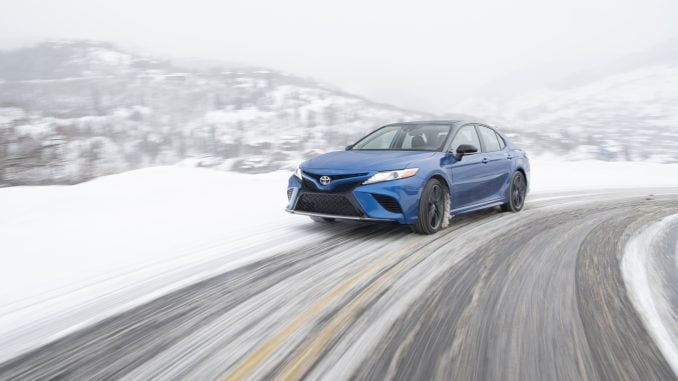
PARK CITY, Utah — It’s been almost 30 years since Toyota offered an all-wheel drive Camry, apparently feeling confident with its FWD offerings and ceding the AWD sedan market to the Subaru Legacy and Nissan Altima AWD. It’s worked, too. The Camry is the best-selling sedan in the country, moving more than 330,000 vehicles last year, and every one was made in America, at Toyota’s Georgetown, Kentucky assembly facility.
Of course, sedan sales have been flagging in recent years. Ford, GM, and Fiat Chrysler have all gotten out of the sedan business, and the Camry itself is outsold by a whole host of crossovers and SUVs, including Toyota’s own RAV4 — the best-selling SUV in America with nearly 450,000 units sold last year.
Beginning this year, however, Toyota will again offer an all-wheel drive system on all its non-hybrid Camry models — and on the larger Toyota Avalon sedan for the first time. As buyers have fled sedans for SUVs and crossovers — and Subaru has hammered car buyers with marketing messages about how great all-wheel drive is — AWD has become a popular feature on a huge number of vehicles. It’s already available as an option on Toyota’s RAV4 and Highlander, and four-wheel drive is largely standard on the company’s most capable SUVs like the 4Runner, Sequoia, and Land Cruiser.
The AWD system in the Camry won’t be useful for forging a path through the desert rocks of Moab, like the advanced four-wheel drive system in the Toyota 4Runner TRD, with its locking differentials and such. But for anything your typical Camry owner might encounter — leaves on a damp road, perhaps, or an inch-and-a-half of snow — it’ll be more than capable.
It uses a system called Dynamic Torque Control. You start with your standard front-wheel drive system, with transmission and transfer case between the front wheels. Then there’s a prop-shaft that runs from the front to the rear, so as to drive the rear wheels when necessary. A coupling in the middle allows the vehicle to run in front-wheel mode most of the time, only engaging the rear when conditions make it necessary. That allows the Camry to have a bit better fuel economy than a full-time AWD car might.
Toyota estimates fuel economy of the AWD Camry will run 25/34/28 City/Highway/Combined across the higher trim levels. The standard FWD version sports a 27/38/31, so there is a penalty but it’s not too bad.
In real-world conditions, the Camry AWD will be in front-wheel mode nearly all of the time. Though it’s possible for 50 percent of the torque generated to go to the rear wheels (the car will use the brakes to direct torque between the rear wheels, rather than dedicated physical hardware to vector torque), it’s only going to be used when it’s needed.
I spent a few hours behind the wheel of a Camry AWD out in Utah last week. First on the dry, paved roads around Park City, and then on a special snow course at the Soldier Hollow Nordic Center where some of the 2002 Salt Lake City Winter Olympic Games were held. On the road it felt like any other Camry: Easy to drive, no muss, no fuss. A reliable car that will get you from Point A to Point B every time.
But out on the snow course, unsurprisingly, things were a different story. As promised, power was sent straight to the rear wheels and, with traction control turned off, the car was a hoot to drive. To be honest, there’s not really much more to tell. The all-wheel drive Toyota Camry is… An all-wheel drive Toyota Camry. It works as advertised and as expected.
But is it necessary? Toyota hasn’t announced final pricing for it, but AWD should be something like a $1,500 price premium over the standard FWD version, regardless of trim level. All things being equal, I’d rather drive all four wheels than just the front — but if you’re concerned about being able to drive in cold, snowy weather, your $1,500 is better spent on a nice set of winter tires and rims. And you’d have another $500 left over to cover fuel and insurance.
Still, Toyota says it thinks a third of Camrys will come equipped with AWD, and some regions, like New England, will see uptake north of 60 percent. I wasn’t able to get a good answer from Toyota about why they hadn’t offered an AWD Camry since 1991. But it’s here now, and it’ll be in your local Toyota dealer in a few months.
